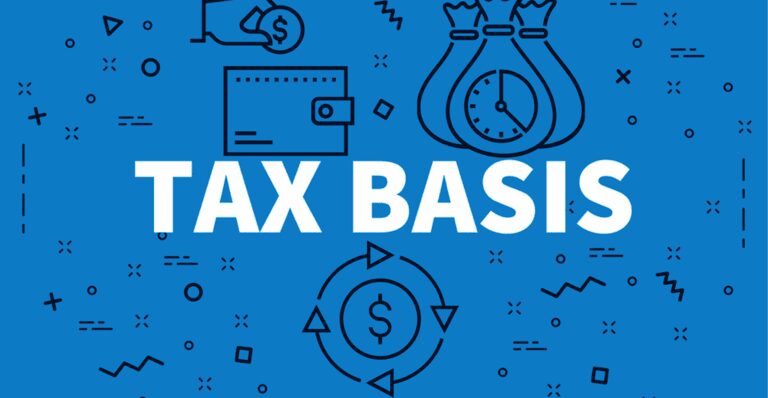FDAP Income (Fixed, Determinable, Annual, Periodical)- Best Guide 2025
Table of Contents
What is FDAP Income?

FDAP Income (Fixed, Determinable, Annual, Periodical) income refers to passive income earned by non-resident aliens and foreign entities from U.S. sources. It includes types of income that are fixed or predictable in amount and paid regularly or periodically, such as interest, dividends, rents, royalties, and certain compensation. Unlike income connected to an active U.S. business, FDAP income is generally taxed on a gross basis at a flat 30% withholding rate, unless reduced by an applicable tax treaty. This type of income is typically passive and does not involve ongoing business operations in the U.S.
FDAP includes income types that are fixed, determinable, annual, or periodical in nature, typically passive payments rather than income from active business operations. Common examples include:
- Interest
- Dividends
- Rents (passive, not from an active trade or business)
- Royalties
- Annuities
- Certain compensation for services
- Gains from the sale of property (in some cases)
FDAP income is generally subject to withholding tax at a flat 30% rate on the gross amount, unless reduced by a tax treaty.
Key Traits of FDAP Income
FDAP income is characterized by being fixed, determinable, annual, or periodical, meaning the payments are predictable and occur regularly or at set intervals. It typically represents passive income earned from U.S. sources by nonresident aliens or foreign entities, such as interest, dividends, rents, and royalties. Unlike income effectively connected with a U.S. trade or business (ECI), FDAP income is taxed on a gross basis without deductions. It is subject to a flat 30% withholding tax, which may be reduced or exempted under tax treaties. FDAP income does not require active participation in a U.S. business and generally involves passive investment returns or payments.
- Passive Income: FDAP income is generally passive, such as interest, dividends, rents, and royalties.
- Fixed or Determinable: The amount and timing of payments are predetermined or regularly scheduled.
- Annual or Periodical: Payments are made on a recurring basis, like monthly interest or quarterly dividends.
- Gross Basis Taxation: Tax is withheld on the full amount of the payment without allowing deductions for expenses.
- U.S. Source: Income must originate from U.S. sources to be classified as FDAP.
- Withholding Tax: Subject to a flat 30% withholding tax, unless reduced by a tax treaty.
- No Active Business Requirement: FDAP income is not connected to an active U.S. trade or business.
- U.S. Source: Income must be sourced in the U.S. for it to qualify as FDAP.
Eligibility / Who is Subject to FDAP?
FDAP taxation applies primarily to non-resident aliens and foreign entities who receive U.S.-source passive income such as interest, dividends, rents, royalties, or certain service payments. If these individuals or entities do not have a U.S. trade or business connected with that income, the payments are classified as FDAP. U.S. withholding agents are responsible for withholding tax on these payments unless reduced or exempted by an applicable tax treaty. Essentially, any foreign person earning fixed or periodic income from U.S. sources, without engaging in an active U.S. business, is subject to FDAP withholding rules.
FDAP rules apply primarily to:
- Nonresident aliens receiving passive U.S.-source income.
- Foreign corporations earning U.S.-source passive income.
- Certain foreign partnerships or trusts with passive income from U.S. sources.
Common Examples of FDAP Income
- Interest from U.S. bank accounts or loans
- Dividends paid by U.S. corporations
- Rents from leasing real estate in the U.S. (passive rental income)
- Royalties from copyrights, patents, trademarks used in the U.S.
- Annuities and other periodic payments
- Certain compensation for personal services performed in the U.S. (if not effectively connected)
- Gains from the sale of U.S. property in specific cases
- Other fixed or periodic income paid by U.S. sources to foreign persons
These incomes are generally subject to 30% withholding tax unless reduced by a tax treaty.
Tax Rates on FDAP
FDAP (Fixed, Determinable, Annual, or Periodical) income earned by nonresident aliens and foreign entities from U.S. sources is generally subject to a flat withholding tax rate of 30% on the gross amount of the payment. This withholding tax is applied at the source by the U.S. payer or withholding agent, meaning tax is deducted before the payment reaches the foreign recipient. Unlike taxable income connected to a U.S. trade or business (ECI), FDAP income is taxed on a gross basis, so no deductions or expenses can be subtracted before applying the tax.
However, the 30% withholding rate is often reduced or eliminated under an applicable income tax treaty between the U.S. and the recipient’s country of residence. Many tax treaties lower the withholding rate to as low as 0%, 10%, or 15%, depending on the type of income (e.g., dividends, interest, royalties). To benefit from these treaty rates, the foreign recipient must provide valid documentation (usually Form W-8BEN or W-8BEN-E) to the withholding agent.
If a tax treaty benefit applies but is not properly documented, the full 30% withholding will generally apply. Additionally, certain types of FDAP income, such as portfolio interest or certain bank deposit interest, may be exempt from withholding tax altogether under specific IRS rules.
In summary, the key features of FDAP tax rates are:
- Standard rate: 30% withholding tax on gross FDAP income
- No deductions: Tax applied on the full payment amount
- Tax treaty benefits: Possible reduction or exemption of the withholding tax rate
- Documentation required: To claim treaty benefits and avoid full withholding
- Exemptions: Certain types of income like portfolio interest may be exempt
This withholding system simplifies tax collection on passive income paid to foreign persons while providing mechanisms to avoid double taxation through treaties.
Forms Required for FDAP Reporting
Several key IRS forms are involved in the reporting and withholding of FDAP income to ensure compliance with U.S. tax laws:
- Form W-8 Series (W-8BEN, W-8BEN-E, W-8ECI): These forms are completed by foreign individuals and entities to certify their foreign status and claim any applicable tax treaty benefits. Form W-8BEN is used by individuals, while W-8BEN-E is for entities. Form W-8ECI is used if the income is effectively connected to a U.S. trade or business (not FDAP).
- Form 1042: This is the annual withholding tax return filed by the U.S. withholding agent (payer) who has withheld tax on FDAP payments made to foreign persons. It reports the total amounts paid and taxes withheld.
- Form 1042-S: This form must be provided to each foreign recipient of FDAP income and filed with the IRS. It details the amount of income paid and the tax withheld, serving as a statement similar to a Form 1099 for U.S. taxpayers.
- Form 1040-NR: Nonresident alien individuals who receive FDAP income and have U.S. tax filing obligations use this form to report income and claim refunds if excess withholding occurred.
- Form 1099: Generally used for reporting payments to U.S. persons, not typically for foreign recipients of FDAP income.
These forms ensure proper documentation, withholding, and reporting of FDAP income to both the IRS and the income recipient, facilitating compliance and transparency in cross-
Due Dates for FDAP
The timing for tax withholding, deposit, and reporting of FDAP (Fixed, Determinable, Annual, or Periodical) income involves several important deadlines that withholding agents and payees must follow to remain compliant with IRS rules:
1. Withholding Tax Deposit Due Dates
U.S. withholding agents who pay FDAP income to foreign persons are required to deposit the withheld tax with the IRS by the 15th day of the month following the month in which the payment was made. For example, if FDAP income is paid in March, the withholding tax must be deposited by April 15. Failure to deposit on time may result in penalties and interest.
1. Annual Reporting – Form 1042 and Form 1042-S
- Form 1042 (Annual Withholding Tax Return): The withholding agent must file this form annually by March 15 following the calendar year in which the FDAP income was paid. This form summarizes total FDAP payments and the taxes withheld during the year.
- Form 1042-S (Foreign Person’s U.S. Source Income Subject to Withholding): This form must be furnished to each foreign recipient by March 15 and also filed with the IRS by March 15. It details the amount of income paid and the tax withheld for that individual or entity.
2. Extensions
The IRS may grant extensions for filing Forms 1042 and 1042-S upon request, but withholding tax deposits must still be made timely to avoid penalties.
3. Recipient Filing
Foreign recipients of FDAP income typically do not need to file a U.S. tax return unless they wish to claim a refund for over-withheld tax. If filing is required, Form 1040-NR must generally be filed by April 15 (if wage income is involved) or June 15 (if only passive income and no wages) following the tax year.
Summary of FDAP Due Dates
| Filing/Payment | Due Date | Description |
| Withholding tax deposit | 15th day of the month after payment | Deposit of tax withheld on FDAP income |
| Form 1042 (Annual return) | March 15 (following year) | Summary of withholding and payments |
| Form 1042-S (Recipient statement) | March 15 (following year) | Issued to recipient and IRS reporting |
| Recipient’s tax return (if applicable) | April 15 or June 15 (following year) | To claim refund or report income |
Adhering to these deadlines is critical to avoid penalties and ensure smooth compliance with U.S. tax withholding and reporting obligations related to FDAP income.
Procedure to File FDAP
Filing and compliance related to FDAP (Fixed, Determinable, Annual, or Periodical) income involve a series of coordinated steps between the U.S. withholding agent (the payer) and the foreign recipient. Here’s a detailed step-by-step overview of the process:
Step 1: Identify FDAP Income and Withholding Obligations
- The U.S. withholding agent determines if the payment to a foreign person qualifies as FDAP income (e.g., interest, dividends, royalties).
- Confirm that the income is from a U.S. source and is not effectively connected to a U.S. trade or business (which would be ECI instead).
Step 2: Obtain Proper Documentation from the Foreign Recipient
- The withholding agent requests the foreign recipient to provide a Form W-8 series (usually Form W-8BEN for individuals or W-8BEN-E for entities) to:
- Certify foreign status.
- Claim eligibility for a reduced withholding rate or exemption under a tax treaty if applicable.
- Without a valid Form W-8, the withholding agent generally must withhold tax at the full 30% rate.
Step 3: Withhold the Appropriate Amount of Tax
- Based on the documentation and applicable tax laws, the withholding agent calculates the correct withholding tax rate (standard 30% or a reduced treaty rate).
- The tax is withheld on the gross amount of the FDAP payment before it is paid to the foreign recipient.
Step 4: Deposit Withheld Taxes with the IRS
- The withholding agent deposits the withheld tax with the IRS by the 15th day of the month following the month of payment.
- Timely deposits avoid penalties and interest.
Step 5: File Annual Information Returns
- By March 15 of the year following the payment, the withholding agent must file:
- Form 1042 (Annual Withholding Tax Return): Reports total FDAP income paid and taxes withheld for the year.
- Form 1042-S (Foreign Person’s U.S. Source Income Subject to Withholding): Issued to each foreign recipient detailing their specific income and withholding. Copies must be provided both to the IRS and the income recipients.
Step 6: Foreign Recipient’s Tax Reporting (If Applicable)
- Although withholding generally satisfies U.S. tax liability on FDAP income, the foreign recipient may file a Form 1040-NR to:
- Report the income if required.
- Claim refunds if excess tax was withheld.
- Filing deadlines vary but generally are April 15 or June 15 of the year following the income.
Additional Compliance Considerations
- Maintain accurate records of payments, withholding, and documentation.
- Renew Form W-8 certifications every three years or when circumstances change.
- Review applicable tax treaties to ensure correct withholding rates are applied.
- Stay updated on IRS guidance and regulatory changes affecting FDAP withholding.
Summary
| Step | Description |
| 1. Identify FDAP income | Confirm payment qualifies as FDAP income |
| 2. Collect Form W-8 | Obtain foreign status and treaty documentation |
| 3. Withhold tax | Calculate and withhold correct tax amount |
| 4. Deposit tax | Deposit withheld tax timely with IRS |
| 5. File Forms 1042 & 1042-S | Annual reporting to IRS and foreign recipients |
| 6. Foreign recipient filing | File U.S. tax return if seeking refund or required |
Calculation of FDAP Tax
Calculating tax on FDAP (Fixed, Determinable, Annual, or Periodical) income involves a straightforward but crucial process, as the tax is generally withheld on a gross basis — meaning before any expenses or deductions are taken into account. Here’s a detailed explanation of how to calculate FDAP tax:
Step 1: Determine the Gross FDAP Income Amount
- Identify the total amount of U.S.-source FDAP income paid to the foreign person during the taxable period.
- Examples include interest payments, dividends, royalties, rents, or certain compensation.
- Note: Since FDAP is taxed on the gross amount, no deductions or adjustments for related expenses are allowed.
Step 2: Identify the Applicable Tax Rate
- The default withholding tax rate on FDAP income is 30%.
- However, if the foreign recipient is eligible for a reduced rate or exemption under a tax treaty, apply the specific treaty rate instead.
- To claim a reduced treaty rate, the recipient must provide valid documentation (Form W-8BEN, W-8BEN-E).
Step 3: Calculate the Tax Withholding Amount
- Multiply the gross FDAP income amount by the applicable withholding tax rate.
Formula:
FDAP Tax=Gross FDAP Income × Withholding Tax Rate
Step 4: Withhold the Calculated Tax
- The withholding agent deducts this tax amount from the payment made to the foreign recipient and deposits it with the IRS.
Example Calculation
Suppose a foreign investor receives $10,000 in U.S. dividends (FDAP income). The standard withholding rate is 30%, but their country has a tax treaty with the U.S. reducing the withholding rate to 15%.
- Gross FDAP income = $10,000
- Withholding rate under treaty = 15%
Tax withheld:
$10,000×15%=$1,500
The withholding agent pays the foreign investor $8,500 ($10,000 – $1,500) and remits $1,500 to the IRS.
Important Considerations
- No deductions: FDAP tax is applied to the full gross amount, with no allowance for expenses or costs.
- Multiple payments: If multiple FDAP payments are made during the year, withholdings are calculated separately for each or aggregated depending on circumstances.
- Tax treaty documentation: Proper documentation is essential to apply reduced rates; otherwise, the full 30% rate applies.
- Exemptions: Certain FDAP income types, like portfolio interest, may be exempt from withholding under IRS rules.
This clear, gross-basis withholding system ensures that the IRS collects tax on passive income paid to foreign persons, simplifying compliance while offering treaty benefits when applicable.
Summary Table
| Aspect | Description |
| Income Type | Passive, fixed/determinable, periodic income |
| Taxation Basis | Gross income, no deductions |
| Typical Tax Rate | 30% withholding (may be reduced by treaties) |
| Forms Required | Form 1042, 1042-S, W-8BEN/E, 1040-NR (if filing) |
| Who Is Subject | Nonresident aliens, foreign corporations |
| Filing Deadlines | Withholding deposits monthly; 1042 & 1042-S annually by March 15 |
| Calculation | Gross income × withholding rate |
Penalties on FDAP
Failure to comply with FDAP withholding and reporting requirements can lead to significant penalties imposed by the IRS on withholding agents and, in some cases, on foreign recipients. Here’s an overview of common penalties related to FDAP income:
1. Failure to Withhold Penalty
If the withholding agent fails to withhold the required 30% tax (or applicable treaty rate) on FDAP payments, the IRS can assess penalties equal to the amount of tax not withheld. This means the withholding agent is personally liable for the tax that should have been withheld and paid to the IRS.
2. Late Deposit Penalties
Withheld taxes must be deposited with the IRS by the due date (generally the 15th day of the month following the month of payment). Failure to deposit on time results in:
- 2% penalty if late by 1–5 days
- 5% penalty if late by 6–15 days
- 10% penalty if late by more than 15 days
- Additional penalties and interest may apply for longer delays.
3. Failure to File Information Returns (Forms 1042 and 1042-S)
Withholding agents must file Form 1042 and provide Form 1042-S to foreign recipients by the March 15 deadline. Penalties for late or missing filings include:
- $50 per information return if filed within 30 days late
- $110 per information return if filed more than 30 days late but before August 1
- $290 per information return if filed after August 1 or not at all
- Maximum annual penalties can be very high depending on the number of returns.
4. Failure to Provide Form 1042-S to Recipients
Penalties for failing to furnish Form 1042-S to the foreign recipient mirror those for failure to file with the IRS and can also result in fines per missing form.
5. Intentional Disregard Penalty
If the IRS determines the failure to comply was due to intentional disregard rather than negligence, higher penalties apply, with minimum penalties per failure starting at $580 or more, regardless of the number of forms involved.
6. Interest on Unpaid Taxes
In addition to penalties, the IRS charges interest on any unpaid or late-paid withholding taxes, compounding the financial impact over time.
Summary:
| Penalty Type | Description | Penalty Amount / Rate |
| Failure to Withhold | Tax not withheld | Amount of tax not withheld |
| Late Deposit | Delay in tax deposit | 2% to 10% of amount late |
| Failure to File Forms 1042/1042-S | Late or missing returns | $50 to $290 per return |
| Failure to Provide Form 1042-S | Not giving recipients their copies | Same as failure to file penalties |
| Intentional Disregard | Willful non-compliance | Minimum $580+ per failure |
| Interest | On unpaid withholding tax | Variable, compounded |
Proper withholding, timely deposits, accurate reporting, and providing recipients with correct documentation are essential to avoid these costly penalties and maintain compliance with FDAP tax obligations.
Impact of Tax Treaties on FDAP Income
Tax treaties between the U.S. and foreign countries play a crucial role in reducing or eliminating the withholding tax rates on FDAP (Fixed, Determinable, Annual, or Periodical) income. These treaties are designed to avoid double taxation and promote cross-border investment by providing favourable tax treatment to residents of treaty partner countries.
Key Impacts of Tax Treaties on FDAP:
- Reduced Withholding Rates:
Many treaties lower the standard 30% U.S. withholding tax on FDAP income to rates ranging from 0% to 15%, depending on the type of income. For example:- Dividends may be taxed at rates as low as 5% or 15%.
- Interest and royalties often qualify for reduced or zero withholding.
- Exemptions and Special Provisions:
Some treaties provide exemptions for certain types of FDAP income, such as interest paid to foreign governments or international organizations. - Eligibility Requirements:
To claim treaty benefits, foreign recipients must be residents of the treaty country and provide valid documentation (typically IRS Form W-8BEN or W-8BEN-E) certifying their eligibility. - Limitation on Benefits (LOB) Clauses:
Many treaties include LOB provisions that restrict treaty benefits to prevent abuse, ensuring only qualifying residents benefit from reduced rates. - Reduced Compliance Burden:
Treaties may simplify reporting and withholding requirements, streamlining the tax process for withholding agents and recipients.
Example:
Without a treaty, a foreign investor receiving $10,000 in U.S. dividends faces a 30% withholding tax of $3,000. Under a treaty reducing the rate to 15%, the tax withheld is only $1,500, increasing the net payment and making U.S. investments more attractive.
Conclusion
FDAP (Fixed, Determinable, Annual, or Periodical) income represents a significant category of U.S.-source passive income subject to specific withholding and reporting requirements for foreign persons. Understanding the key traits, eligibility criteria, applicable tax rates, and filing procedures is crucial for both withholding agents and foreign recipients to ensure compliance and optimize tax outcomes.
The default withholding tax on FDAP income is a flat 30% on the gross payment amount, but tax treaties often reduce or eliminate this rate, making it essential to provide proper documentation to claim treaty benefits. Timely tax deposits, accurate filing of Forms 1042 and 1042-S, and proper issuance of withholding certificates to recipients are vital to avoid costly IRS penalties and interest.
Navigating the complexities of FDAP taxation requires careful attention to IRS guidelines, treaty provisions, and procedural deadlines. When properly managed, FDAP withholding acts as an efficient mechanism for the U.S. government to collect tax on foreign investors’ income while providing clear pathways for treaty-based relief and refunds.
In summary, mastering FDAP rules protects all parties involved from non-compliance risks and fosters smooth international financial transactions.
FAQs on FDAP (Fixed, Determinable, Annual, or Periodical Income)
1. What is FDAP income?
FDAP income refers to U.S.-source passive income — like interest, dividends, rents, royalties, and certain compensation — paid to foreign persons and taxed on a gross basis.
2. Is FDAP income taxable in the U.S.?
Yes, FDAP income is subject to a flat 30% U.S. withholding tax unless reduced by a tax treaty.
3. How is FDAP income taxed for non-residents?
Non-residents are taxed at a 30% flat rate on FDAP income, withheld at the source by the U.S. payer. This rate may be reduced or eliminated under an applicable tax treaty.
4. What is the difference between ECI and FDAP?
ECI (Effectively Connected Income) is taxed on a net basis with deductions, while FDAP is taxed on a gross basis with no deductions and typically involves passive income streams.
5. Can I reduce the 30% FDAP withholding tax?
Yes. You can reduce or eliminate the withholding by claiming a tax treaty benefit using IRS Form W-8BEN or W-8BEN-E.
6. Which IRS forms are required for FDAP income?
- Form W-8BEN / W-8BEN-E – For foreign recipients to claim treaty benefits.
- Form 1042 – Annual withholding tax return filed by the U.S. withholding agent.
- Form 1042-S – Details payments made and taxes withheld for each foreign recipient.
7. When are FDAP withholding tax filings due?
- March 15 – Forms 1042 and 1042-S must be filed with the IRS and provided to recipients.
- Tax deposits are generally due by the 15th of the month following the payment.
8. Is FDAP income reported on Form 1040-NR?
Yes, foreign individuals receiving FDAP income may report it on Form 1040-NR if they are filing to claim a refund or required to file for other U.S. tax purposes.
9. What are the penalties for failing to withhold FDAP tax?
Penalties include 100% of the tax not withheld, late deposit fees, and failure-to-file penalties, plus interest and increased penalties for intentional disregard.
10. Does portfolio interest qualify as FDAP income?
Yes, but it is generally exempt from U.S. withholding tax under specific conditions, making it a popular investment structure for foreign persons.







